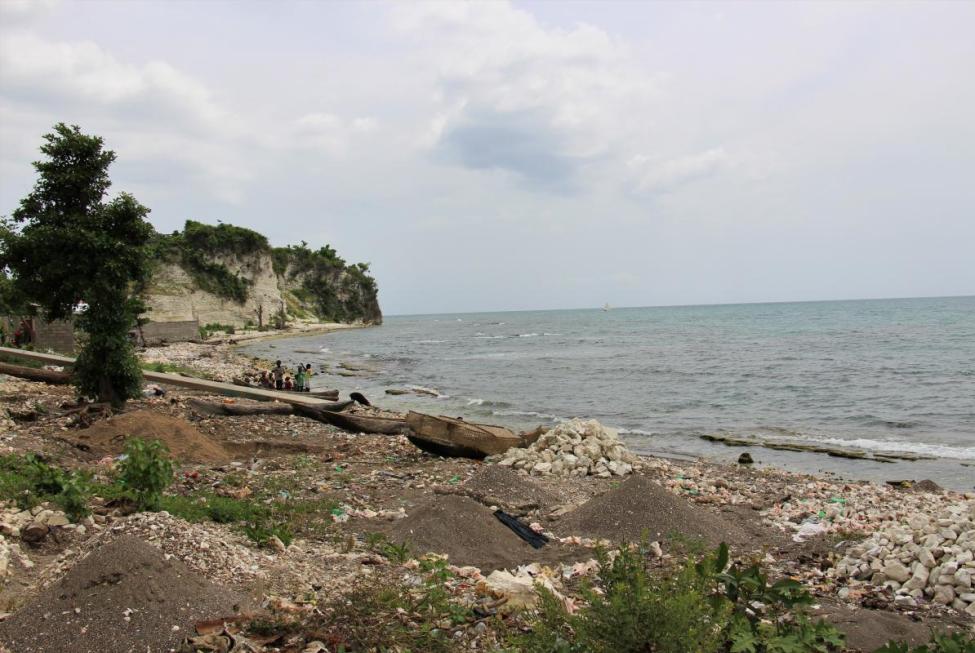-
Who We Are
WHO WE AREThe International Organization for Migration (IOM) is part of the United Nations System as the leading inter-governmental organization promoting humane and orderly migration for the benefit of all. IOM has had a presence in Haiti since 1994.
About
About
IOM Global
IOM Global
-
What We Do
Our WorkAs the leading inter-governmental organization promoting humane and orderly migration, IOM plays a key role to support the achievement of the 2030 Agenda through different areas of intervention that connect both humanitarian assistance and sustainable development. In Haiti, IOM partners with the Government on migration management and capacity building programs, as well as to address and mitigate the effect that natural disasters have on the most vulnerable population.
Cross-cutting (Global)
Cross-cutting (Global)
- Data and Resources
- Take Action
- 2030 Agenda
Dame Marie, June 14, 2017, Pierre 14 years, Lovedaica 10 years and Divins 8 years play on the deck of a small colorful house located on the main road along the sea. Ena, their mother, greets us at the doorstep. "Welcome to our new home," she says cheerfully. The dwelling is composed of a space with a kitchen, a bedroom and a latrine.
Ena and her family are beneficiaries of the Cash for Rent program that helps them to rent a house for a year. They will receive a package of 16,000 gourdes divided into three installments which include the subsidy for one year of rent, a transport fee and an incentive to start an income-generating activity. The final installment depends on the fact the household is still living in the house during the unexpected visits conducted once relocated.
Start over in the community
"Based on our socio-economic studies and our experience, the" cash for rent "option for a small house was the best way to help the victims of Matthew. Relocation aims to support families in vulnerable situations. We help them return home or reintegrate the community with a decent housing option, "says Marguerite Jean, IOM CCCM project officer in charge of the relocation project.
Nine months ago, Ena lost her home and her small business during Hurricane Matthew. She stayed with her children in a collective center for displaced persons at the Semerzier High School. That is where she met with the IOM- International Organization for Migration- agents, during an awareness session they hold for the displaced.
These agents offered her to become a beneficiary on the "IOM Return Project", which offers the one year rental subsidy. Relocation is a voluntary process, when a family agrees to be a part of the project, they have to go through different stages.
"The first step is to raise awareness, to explain the project itself and why it is important to choose the relocation. Then comes the screening stage. For the purpose of resilience, the households establish the first contacts with the owner of their future home, to understand their responsibilities, rights and duties as future tenants, "continues Marguerite Jean.
When the beneficiary has chosen a home, we proceed to the next phase: the enrollment where the household integrates IOM’s database. Our team visits the house and checks if the information given is correct.
"We check whether the government environmental, construction standards as well as our standards in terms of protection are met. If this visit is positive, we validate the first payment to the owner of the place, "adds Jackson Séjourné, project assistant for the IOM Return Unit in Haiti.
In order to carry out relocation activities, the support and assistance of various governmental entities is also required through the UCLPB - the Public Housing and Building Construction Unit - and the municipality which is the closest authorities to our beneficiaries. Based on a legal document signed by the owner and the tenant, the municipality becomes the third person who defends the beneficiary in case of a problem with the owner.
Ena: before and after Matthew...
Ena is a merchant who used to sell peanuts and plastic kitchen utensils before the hurricane took away everything. The last amount of money that will be paid will allow her to restart her business and get a fixed income that can be used next year to pay her rent and to provide for her family. "IOM is “bon bagay’’ (it's a good thing - in Creole), because the organization helps us to recover and to start over after the disaster," she concludes.
IOM and its partners have helped 319 households such as Ena’s to be relocated to a decent housing, thus providing them with a fresh start.
While a new hurricane season is underway, there are still 3,618 people housed in 51 sites in the departments of Grand'Anse, the South and the Nippes.
The dignified and safe return to the communities of origin of the displaced following the Hurricane Matthew can only be achieved through housing solutions and access to sustainable livelihoods. Increased funding for the ’’CCCM’’ sector coupled with ’’Shelter’’ partnerships will allow these families to leave camps and evacuation centers in order for them to reach their communities, thereby reducing their vulnerability to the climatic hazards.

